|
Long before I even read Jeanette Wall’s incredible memoir for myself I watched how her words affected people. It was summer, and I was in a production of William Shakespeare’s Romeo & Juliet. We practiced in our director’s backyard which left us with a lot of down time in-between scenes to frolic around the house and lay in grass. And when they weren’t memorizing lines, three of the girls from the cast that summer all shared one copy of The Glass Castle. I remember watching them sit captivated by her words. Each saving their spots with folded pages or bookmarks. Savoring the beautiful brutality of her words with reverence. It wasn’t until a few years later that I understood the true power of those words as the rationale behind three girls graciously sharing one single book.
Everyone likes to think their childhood was magic and unique. But while Jeanette Walls’s life is the epitome of those words it her bravery to write about her experiences that truly defines her story. Though far from glamorous her childhood spent in poverty was not without its brilliance. Growing up in a constant state of movement with a dreamer and artist for parents left little room for suburban stability. Their dysfunctional but imaginative ways shaped the morals she learned how to form for herself. Jeanette’s life story is one of beauty, redemption, forgiveness, adventure, abuse, and heartbreak. But the thing that captivates readers of all ages is the rare purity found in her telling of the hardest kinds of truths. Recently finished in pre-production and set to air in 2017 is the movie adaption of the Walls family’s story. Acclaimed actress Brie Larsen known for her roles in Room and Short Term 12 is set to play adult Jeanette. Larsen will be joined by actors Woody Harrelson and Naomi Watts as Mr. and Mrs. Walls. Larsen’s track record of depicting resilient women is one of the main reasons I have faith in the movie’s potential to be fantastic. While I am aware my hopes remain dangerously high for this film, I am eager for the day I will yet again get to witness a portion of the world be captivated and humbled by an incredible woman’s story.
0 Comments
*This review definitely contains some spoilers and explanations that may make no sense to someone who hasn’t seen the movie. If you want to watch “The Magnificent Seven” like I did with no previous knowledge of the film, I don’t suggest you read this before seeing it. If you’re curious about it and need some encouragement before seeing it, stick around.
I had very limited knowledge of “The Magnificent Seven” before I stepped into the theater. All I knew was that it was a Western movie and it starred Chris Pratt. That was it. When the first scene played through, and a church was torched and people were murdered by the antagonist Bartholomew Bogue (Peter Sarsgaard), I was a little taken-aback. The tone for the movie is already very serious, and I wasn’t sure I was going to like it. After finishing the movie, I really stand by that last sentence. “The Magnificent Seven” is very serious, as most Westerns are (I’m assuming, I also have very limited knowledge of his genre so there’s a good chance I’m wrong). I doubt I could write a better synopsis than IMDB, so here’s their description of the movie: “Director Antoine Fuqua brings his modern vision to a classic story in The Magnificent Seven. With the town of Rose Creek under the deadly control of industrialist Bartholomew Bogue, the desperate townspeople employ the protection from seven outlaws, bounty hunters, gamblers and hired guns. As they prepare the town for the violent showdown that they know is coming, these seven mercenaries find themselves fighting for more than money.” (Not my own words, obviously, because I took this from IMDB). It’s a pretty basic story of a “bad guy” taking over a small town, and the villagers enlisting the efforts of the “good guys” (loosely-applied term) to take their town back. Emma Cullen (Haley Bennet) and her friend Teddy Q (Luke Grimes) seek revenge for the murder of Emma’s husband (played by Matt Bomer, his death was pretty shocking because I expected him to last a little longer than the burning church from the opening scene). Bountyhunter Sam Chisolm (Denzel Washington) is the first to accept Emma’s offer (because of a tragic past with Bartholomew that isn’t revealed until the very end). He soon recruits gambling addict and “world’s best lover” Josh Faraday (Chris Pratt), the straight-shooter Goodnight Robicheaux (Ethan Hawke), the “bear in people’s clothes” Jack Horne (Vincent D’Onofrio), the knife-thrower Billy Rocks (Byung-hun Lee), the Mexican outlaw Vasquez (Manuel Garcia-Rulfo), and the rogue Native American warrior Red Harvest (Martin Sensmeier). The first thing I usually notice about movies with large casts like this one is how diverse they are. I was impressed this movie seemed to have adequate representation, although I wish there were more female roles. Bennet is mostly onscreen as the only woman among a full-cast of men, who sometimes make jokes at her expense. Aside from the film’s lack of women, I appreciated how emotionally connected I got with each of the “magnificent” Seven. The directors invested as much time into Washington’s character as they did Pratt’s, and so on. With the exception of D’Onofrio and Sensmeier’s characters, I wanted each of the Seven to live through their final fight with Bogue. After watching these characters grow and form a genuine friendship with each other as they rallied the town together during the final battle for Rose Creek against Bogue and his army, I was surprised so many of them were killed. Jack Horne is shot with multiple arrows by Bogue’s Native henchman Denali (a scene that reminded me of Boromir’s iconic death in the first “Lord of the Rings” movie), and Billy and Goodnight are obliterated from their sniper posts at the top of the (still-burnt) church steeple. The most memorable death, and definitely the most badass I’ve ever seen, was Faraday’s. After charging at Bogue’s men alone, Faraday is shot multiple times. His last act before dying is sticking a cigar in his mouth, which one of Bogue’s men lights. When a gun is turned on him, Faraday collapses face-down in the dirt, but he isn’t dead yet. He slowly rises, revealing a lit stick of dynamite in his hand. He smirks at the henchmen as the dynamite explodes, killing Faraday and his targets, but also destroying the automatic gun that killed so many of the villagers (and Billy and Goodnight). I was very emotional after this scene. I was equally-surprised Chisolm wasn’t killed. In a movie where so many of the characters are killed, Chisolm is one of a few people who manages to see the death of Bogue (courtesy of Emma). By the end, Emma’s husband is avenged, Chisolm’s family (also killed by Bogue, won’t go into a lot of detail with this because it’s very sad) is avenged, and the four dead mercenaries are buried. I can comfortably say that while I liked “The Magnificent Seven” more than I thought I would, I wouldn’t see it again. There was a lot of action, graphic content (blood, explosions, the whole nine-yards), and a little bit of misogyny (just a smidge). A comment Chisolm made to Emma before the final battle, as the Seven are preparing the town for Bogue’s attack, really stuck with me. When she asked where she would be posted, he told her to stay with the women and children. When she told him she could shoot, he told her that if women were going to be shooting with the rest of the Seven, they were as good as dead anyway. I understand that this movie is set in the West, and women weren’t seen as equals to men, but when you consider how surprisingly diverse the cast is, I don’t think it would be a stretch to include a woman in the group’s dynamic. After all, it’s Emma who rallies Chisolm, helps ready the town, and ultimately kills Bogue. She deserves more credit than she was given. Another small, petty issue I had with the movie were the horses. I know none of them were really hurt during the explosions, but the scenes I found the most disturbing were the ones where horses were thrown into the air from dynamite or fell to the ground as they were pelted with bullets. I admit this is a very nit-picky problem to have, especially since it was necessary to have the horses subjected to the same violence the men faced. On a more positive note, the movie did lighten up after the first scene. Chris Pratt’s character offered his typical humor, dropping some funny one-liners every now and then (as did some of the other characters). The small inclusions of humor helped balance the intensity of the other scenes, as gunfights were rampant and almost everyone dies in the end. If you’re a fan of Western films, you’ll love this one.
*This review may contain spoilers. If you have not seen “Snowden” and don’t want the surprise of the movie ruined for you, don’t read ahead (or do, but don’t blame me if the illusion is shattered when you do eventually see it, because you should).
A quick recap of the movie: “Snowden” follows the real life story of of Edward Snowden, the man who worked for the United States National Security Agency and released NSA records to the media. After discovering the NSA (in compliance with the Central Intelligence Agency) was performing the illegal wiretapping of millions of American citizens, Snowden made the decision to alert the media (from a small Hong Kong hotel room). As he awaits refugee status to avoid an extradition to the U.S. for [an unfair] trial, Snowden is trapped in Moscow when the U.S. Department of State puts a red flag on his passport. Snowden is still living in Moscow as the U.S. government tries to work with Russian authorities to have him sent back to the States for trial. First, I cannot even begin to explain how ecstatic I was with the casting choice of Joseph Gordon-Levitt as Edward Snowden. He fit the role perfectly, and has a very strong dedication to the story. A month ago, Gordon-Levitt called out The Washington Post on Twitter (below or here) for refusing to support Snowden even after they shared the NSA information he provided (and won a Pulitzer Prize for it).
Other all-star cast members include Shailene Woodley, Zachary Quinto, Nicholas Cage (I was genuinely surprised to see him), and Melissa Leo.
There’s no arguing Snowden is a very controversial figure. “Snowden” aims to humanize him, providing the audience with Edward’s experiences and how they influenced him to eventually leak classified government projects. His love interest, Lindsay (played by Woodley), is one of the main reasons he makes the decision. Their strained relationship is a significant focus in “Snowden.” One scene shows Edward’s [warranted] paranoia after he learns his former-boss from the CIA is monitoring Lindsay’s e-mail, cell phone, and online presence. Other scenes show Edward placing bandages over his and Lindsay’s laptop cameras, and arguing with Lindsay over deleting her nude self-portraits. In the end, he wants to protect her (and every other American whose lives are being digitally invaded) from these breaches in personal privacy. An overarching theme in the movie is whether Edward is a traitor or a hero. “Snowden” plays with both labels, using the plot to show him in both roles. Toward the end of the movie, when Edward is copying the NSA files onto his [very discrete] USB drive, he is secretive. Rushed. He is shown looking over his shoulder as he hurries to copy the last file, and it is implied that his actions are wrong. He is guilt-ridden and hunched over, the implications of his decision weighing on his shoulders. In this moment, we see Edward as a traitor. He is knowingly stealing classified documents from the NSA Hawaii base, risking the jobs of his colleagues (and possibly his own life). The audience sees him sneaking the USB past security in a rubix cube, coaxing one of the security guards (his friend) into testing out the cube to keep the drive from being discovered. On the other hand, commentary from Snowden himself at the very end of the film places him in a different role. His motivations for releasing the documents weren’t sinister. He didn’t want to exploit or destroy the U.S.; he wanted the American people to hold their government (or him, he admitted, if they saw fit) accountable. I attribute this desire to release the documents to his relationship with Lindsay. In the beginning of the movie while they’re on a date, they walk through a crowd protesting Bush’s war in Iraq. Lindsay tells Edward she believes should hold their leaders accountable. People have the right to voice their concerns. By the end of “Snowden,” Edward finally understands what she was talking about with her “liberal” jargon. In addition to his love for Lindsay, Snowden attributes his ultimate decision to the Nuremberg Trials. He questions where the line between following orders and committing a crime is drawn, and if he inadvertently crossed it when he created his surveillance projects for the CIA and NSA (the same projects they were using to spy on Americans). He also emphasized that he should be tried for his actions, but he wouldn’t receive a fair trial under the Espionage Act (hence his persistence in relocating to Latin America to avoid extradition to the U.S. from China). “Snowden” isn’t a movie I would typically describe as action-packed. Edward wasn’t a super-spy or an assassin. He didn’t hold the President for ransom, or invade another country to gain intelligence. But that’s what made it so much better: the entire premise of “Snowden” is that he wasn’t any of those things. Edward was just a regular person. He was a regular person who made the decision to blow the whistle on one of the world’s superpowers, risking his life, relationships, and career. He threw everything away to leak these documents, and that’s (for lack of a better work) impressive. I thoroughly enjoyed this movie, even with its lack of action-packed thrills and explosions (in the traditional sense). The movie was long, but worth every second. I left the theater not only believing that Snowden is a hero for his defiance against the government, but that he’s a complete badass. He had the audacity to question the agencies he worked for and their commitment to “security.” After seeing (or reading about) Edward Snowden, what do you think? Is he a hero, or is he a traitor? Check out kaptainkristain's video on Adult Swim and how it quickly gained traction as one of the coolest channels. Watch the pilot episode of Atlanta, by Donald Glover here! I’m going to start with a short preface: Suicide Squad wasn’t terrible. The film follows a team of supervillains forced together by ARGUS agent Amanda Waller (Viola Davis), under the vigilant supervision of Rick Flag (Joel Kinnaman). The team includes Deadshot (Will Smith), Harley Quinn (Margot Robbie), Killer Croc (Adewale Akinnuoye-Agbaje), Diablo (Jay Hernandez), Enchantress (Cara Delevingne), Boomerang (Jai Courtney), Katana (Karen Fukuhama), and Slipknot (Adam Beach). When Waller loses control of Enchantress, Flag and his team are sent to neutralize her. With several interventions from the Joker (Jared Leto) (and other obstacles), the team is eventually successful in stopping Enchantress from destroying the world. After months of buildup and hype (and quite a few bad reviews from movie critics prior to its August 5th release date), I was a little hesitant to see Suicide Squad. I read that while fans of the franchise and DC Universe loved it, cinematically the movie was a nightmare (with only a 26% on Rotten Tomatoes among critics). Before talking about everything I didn’t like, one aspect I really liked about Suicide Squad was the casting. While all characters were cast pretty well, I especially loved Viola Davis as Amanda Waller, Will Smith as Deadshot, and Margot Robbie as Harley Quinn. I would also like to highlight Delevingne’s performance as Dr. June Moone/Enchantress, Leto as the deranged Joker, and (again) mention Smith’s success as the comedic hitman Deadshot. The final cut of the film was just shy of two hours, and after seeing the movie, I can vouch that it was not long enough. I heard some complaints that the final cut removed some important scenes that helped transition the plot. While I could follow the majority of the movie, some parts left me confused, wondering if I had missed some important detail. I think the longer edition of the movie (available with DVD purchase) will better address this problem. I also think it will help lessen the choppiness between scenes. I also found the relationship between the characters somewhat forced. At the end, Diablo called the squad his family, and Harley referred to them as her friends. The movie could have spent more time developing these relationships, as most characters acted very hostile toward one another for the first 90 minutes of the film. The dynamic between Harley and the Joker is worth a mention, as it wasn’t what I thought it would be. The villainous duo were portrayed as more of a mutually-affectionate couple than the abusive and manipulative relationship they have historically shared. While in one scene, the Joker tortures Harley (as Dr. Harleen Quinzel, before she is known as Harley Quinn), there is little else suggesting emotional/physical abuse. An image released by Rolling Stone Brazil suggests some abusive scenes may have been cut from the final release. As mentioned before, Suicide Squad wasn’t a terrible movie. I didn’t enjoy it as much as I thought I would, but perhaps the extended edition (featuring more Joker and transitional scenes) will change my mind. Overall, I rate the movie 2.5/5 stars. I’m not sure I would watch it again, but I did thoroughly enjoy the characters.
NOTE: All images were taken from here and here. I just found out about Donald Glover's new show on fx, out 9/6, and holy hell am I excited. Not only do I adore Donald Glover, both musically and in film, but the promos look killer. They're shot elegantly, with minimal sound, sometimes backwards, and look reminiscent of Wes Anderson. Watch the whole slew of trailers below via Youtube. Also, Shadow and Act says: FX will premiere Donald Glover’s much-anticipated “Atlanta” on Tuesday, September 6 at 10pm, unfolding over a 10-episode first season, each a half-hour long, revolving around two cousins on their way up through the Atlanta rap scene whose opposing views on art versus commerce, success and race, will make their quest anything but easy. Street art and graffiti played a large role in political protest during Egypt’s 2011 revolution, as mentioned in one of our previous posts. Many artists used their murals as a platform for social campaigns against the government on topics like women’s rights and freedom of speech. Soraya Morayef, a journalist and photographer in Cairo and the owner of the blog Suzee in the City, told the Smithsonian; “There are so many artists and styles. You can tell when someone has been influenced by Banksy or hip-hop fonts, but there are also a lot of individual styles using Arabic calligraphy and that have been inspired by Egyptian pop culture. There is Alaa Awad, who paints pharaonic temples and murals but with a modern twist to them. Then you have El Zeft and Nazeer, who plan their graffiti like social campaigns, where they pick a strategic location and write about it on social media and make short videos” (Quote taken from here). “Nefertiti’s Daughters,” a 2014 documentary directed by Mark Nickolas and co-directed by Elizabeth Van Meter and Racha Najdi, illustrates the important role Egyptian street artists played during the country’s 2011 revolution in protesting the government. The film features the work and commentary of artists Bahia Shebab, Mira Shihadeh, Salma Samy, Ammar Abo Bakr, Amr Nazeer, Shahira Amin, and Christiane Grube as they use their artwork to illustrate various underlying problems in Egyptian society. You can see a preview of the film from YouTube below (or here). The documentary highlights several important themes evident throughout the revolution, one of these themes being the involvement of women. Many female artists have contributed to the art lining the walls of Cairo since 2011. Many female artists chose to protest during the revolution with a spray can, using graffiti to oppose the government’s mistreatment of Egyptian citizens (and women). Women in Egypt have become increasingly active artists since 2011, providing valuable commentary on the country’s human rights violations. In response to the growing number of female activists, organizations dedicated to documenting their work have grown. Notable groups include Women on Walls and NooNewsa. Personally, I viewed this documentary as having a dominant gendered theme. I think the director’s decision to include female street artists and their work helped show how increasingly active they have become in Egyptian politics. Being denied formal political involvement, these women have turned to other platforms to find their voices and share their concerns. In addition to watching “Nefertiti’s Daughters” through a viewing at my school, I had the opportunity to briefly interview the director of the film, Mark Nickolas, through e-mail. Q: What drew you to the idea of making a documentary about the street artists in Egypt during the revolution? Did you have any previous knowledge or connections to the movement, or was "Nefertiti's Daughters" your starting point? Mark Nickolas: The idea for Nefertiti’s Daughters grew out of watching the 2011 uprisings in the Arab world and how politically-charged graffiti and revolutionary street art played such a prominent role as an act of social resistance. As someone who came to filmmaking after many years in Democratic Party politics, I was fascinated by the revolutionary aspect of this form of expression and how, through the simple act of writing on walls, these artists communicated their society’s hopes, dreams and demands. After watching a 2012 TED talk by Egyptian artist Bahia Shehab (the main subject of the film), I began to understand not only the violence that women in Egypt face on a daily basis, but how courageous women like Bahia tackled these previously taboo social issues through street art. After raising $20,000 on Kickstarter at the beginning of 2014, we spent 11 days in Cairo filming in April 2014. Q: For the most part, the international community was relatively unaware of the work illustrated in the documentary by female street artists you interviewed. What was the international community's reaction to your documentary? MN: I'm not sure I agree with the premise. Q: Have you received any feedback from the Egyptian government after the release of the film? MN: No, and I guess that's a good thing. My fear has always been that these artists put themselves at risk by going so public with their work and thoughts about the revolution and the aftermath. In fact, I shared the rough cut of the film with all the subjects because I was concerned that what they said in April 2014 (when I filmed in Cairo), they might not have said a few months later after General Sisi became President Sisi. But not one of them asked that anything be changed or removed. Q: Do you think the film has had an impact on Egyptian politics (more specifically, the street art movement and political protest)? MN: I don't think it has had any impact. But that's not what I think documentary filmmaking is necessarily about. I think what we do as filmmakers adds an important layer of context and knowledge as we all try to grapple with an increasingly complex world, as well as shine light on issues of importance that the traditional media has overlooked. While I still turn to sources like the New York Times as a staple of gathering information, I also try to watch a lot of documentary and narrative films to add a depth and richness to my understanding of the world. I hope that Nefertiti's Daughters has made a small contribution to that goal. But it's a rare film that has direct impact on events. I greatly enjoyed “Nefertiti’s Daughters,” and suggest it to anyone with an interest in Middle Eastern and Northern African affairs, women’s affairs, Egyptian politics, and/or street art and graffiti. This documentary acts as an extension of Bahia Shebab’s TED talk, incorporating the work and commentary of Bahia and other artists during and after Egypt’s initial revolution. It emphasizes the important sociopolitical role street art and graffiti have in Egypt.
NOTE: The first image was taken from here, and the last three were taken from the film’s website. None of these images are not our own. The film “Nola and the Clones” (2016), directed by Irish filmmaker Graham Jones, was released on Youtube at the beginning of March. “Nola” takes place in Dublin, and follows a homeless prostitute named Nola (played by Caoimhe Cassidy) through a series of relations with different men (all played by Joseph Lydon). In an interview for A Potpourri of Vestiges http://www.apotpourriofvestiges.com/2016/03/nola-and-clones-2016-film-by-irish.html, Jones stated, “Volunteering in a good homeless shelter years ago, I learnt that sometimes individuals who can offer the greatest insight into our society receive the least attention from it. The shelter was men-only, though and got me wondering what female homelessness might be like - so over the years I sought to find out. Of course, it’s worse for women because there’s a far greater sexual threat and risk of falling into prostitution, either while homeless or to stave off homelessness. To be honest, I wasn’t even sure if I could make this movie until Caoimhe Cassidy did a reading. But I was very reluctant to give up searching for the right actress because women have always been central to my movies, both in front of and behind the camera and it felt important to honour that. Nola is a strong female character, negotiating her way through a series of very difficult men and we are trying to give her a voice.” (You can read more here http://www.apotpourriofvestiges.com/2016/03/nola-and-clones-2016-film-by-irish.html). A major theme in “Nola” is gender; more specifically Nola coming to terms with her gender. While she is a strong character, she is also very vulnerable. She once admits to one of Lydon’s characters that she does not want to be a girl anymore, blaming her gender for the hardships she has experienced in her life. Nola is a young woman who appears to be engaging in survival sex, which is defined as sexual favors in exchange for basic necessities (shelter, food, water, etc.). Survival sex is very common among young runaways, especially women. Studies have suggested that child sexual abuse may be a large driving force behind the runaways engaging in survival sex, especially among LGBT youth. For more information, I suggest reading this article from Ryot and this collection of studies from Violence Against Women. While the details of Nola’s past are unknown to the viewer, there are some scenes in “Nola” that suggest past abuse. Nola discusses her sexual exploitation when she was 15-years old with one of Lydon’s characters in the car (about halfway into the film). She does not go into a lot of detail about the events of her past, although it is very clear Nola experienced some form of sexual abuse early in her life. Nola’s story is not uncommon either; some studies have found that women who experienced childhood sexual assault are more susceptible to homelessness (you can read more here). “Nola” is a very interesting film that leaves you wanting to know more about Nola and her life. I was fortunate enough to ask Cassidy, Lydon, and Jones a few questions about their roles in the film, which you can read below. Q: What was your inspiration for making a film about a character like Nola, a young homeless prostitute? Why do you believe her story needs to be told? Graham Jones: “I suppose that making Nola a homeless prostitute was a way of exaggerating the key issues she was facing, issues that I imagine a lot of women face on a daily basis, but which get pushed beneath the surface in modern life. I’m talking about the commodification of femininity, the myriad images of beauty programmed into girls at such a young age via the media and programmed into boys as well! We grow up with all that shit, too - the stuff is everywhere - and even though it’s not very subtle in itself, I do find the way it’s so deeply integrated into the fabric of our lives quite subtle and pervasive. By placing the character of Nola on the street, we immediately snap the audience out of that cultural stupor. A girl on the street has to confront men even more directly on a hourly basis, because there is no private space for her to take refuge and so in our movie the audience is forced to confront all this stuff too. It's a kind of exaggeration, obviously, because women are not defined by men - you define your own lives - but at the same time it does have an element of truth, when you consider this weird way that men seem to have women in a kind of cultural bondage. I totally agree with Naoimi Wolf's suggestion that as women have gradually become more powerful, patriarchal society has tried to increase their oppression with images of 'beauty'. I fear the oppression of women has become pushed beneath the surface, rather than gone away. I thought Nola could help us dig it up. The film is obviously made from my perspective, which is a male perspective and so I just tried to be honest about all this stuff. I didn’t begin my relationship with women as a young boy by objectifying them, nor do I objectify them nowadays as an adult - but have I ever objectified a woman? Of course I have! So I tried to honestly get that right into the film, put it right into those clones…” Q: How did you prepare yourself for the role of Nola? Was it difficult playing a homeless prostitute, and did you have any problems connecting with your character? Caoimhe Cassidy: “Good preparation for any role is the key. Each character you develop requires a different process, some more challenging than others for varying reasons. From the moment you first read a script, record a self tape or rehearse a monologue for an audition, you are already consciously and unconsciously building the foundations of a character. Nola’s essence began to formulate in my mind as far back as my audition, which was a self tape. Graham had got in contact and asked would I record an excerpt from her main monologue- the one which she delivers in the car. I suppose the main exercise of the self tape was for Graham to see my interpretation of the character. Nola’s monologue is packed with information about her past, present and future. It is at these early stages of audition that an actor really begins to think about their character. Graham’s monologue is so informative and his style of writing is so naturalistic and approachable. Nola’s monologue became a major point of reference throughout my character building process. I like to think of it as her historical backbone, helping me piece together her past and understand how her experiences have shaped her into the young woman she is today. Time was also a key factor factor when it came to preparation. I had just over one month to prepare from the day I received the news from Graham that I had been cast up to our first day of shooting. For this particular role, time was everything. It was quite an internalised process. Nola was constantly on the brain, some days more than others. As I would go about my day sometimes I would think “I wonder what Nola is doing right now”. This might sound pretty obvious but using your imagination is such an essential tool when it comes to character development. It’s a safe space to exercise your creative ideas- there is no wrong answer. Every scenario you imagine, every scene you reenact, every second that you spend pondering all feeds toward your final interpretation of the character. I like to think of it as ‘an internal rehearsal’ period. It’s kind of like trying to get to know someone in real life. You have to meet them, talk to them, share some experiences with them. It’s the same with a character- however, all these experiences are happening in your mind. At this point of the process you are still separate entities; in this case- Nola and I. By the time you reach your first day of filming, all the necessary elements comes together. All the work that you have put in- learning lines, researching, reflecting, observing and thinking brings the character to life through yourself. It's your job to introduce the character to the audience, no one knows your character like you do. Before we began shooting, myself and Graham met on three separate occasions and continued to stay in contact through email. We opened a channel of conversation, which was vital for me in terms of my character developement. Graham would ask me thought provoking questions regarding Nola’s sense of character. “How do you think she would feel about this? How do you think she would react in this situation?” etc. These kinds of questions encouraged me to dig deeper into Nola’s psyche. I didn’t always know the answers- but that wasn’t the point, some of these questions didn’t require an articulate and verbal response. They were for my own internalised process; topics or situations for me to contemplate. Graham was always there whenever I had any questions. Who better to ask than the writer himself! Contemplation and conversation- the two biggest components that attributed to the development of Nola. I wouldn't say it was difficult playing the role of a homeless prostitute- however, it certainly challenged my capabilities as an actor. There were also times when it was emotionally demanding. To show Nola's pain- I needed to feel her pain or at least empathise with her pain on some level. Connecting with the character wasn’t an issue. Disconnecting was of more importance to me. At the end of each day I had to mentally switch off and detach myself from her, almost like saying “okay goodbye Nola, see you tomorrow”. Then pick up where I left off the following the day. It was important to have ‘me’ time in the evenings. Obviously some evenings I had to recap on the script if I had a scene with Joe the following day. I would dedicate an hour of my evening to this, then relax and let it go. Kind of like yoyo living- connecting and disconnecting. Sounds exhausting but it actually worked quite well for me. I never felt overwhelmed at any point, I just tried to focus in the moment and take each day as it came.” Q: Why did you choose to use “clones” (referring to Lydon’s various characters who share many similarities with one another) in this film? Do you think you could have told the same story if you used different male actors/characters? GJ: “I thought we could make the point more effectively if they were all portrayed on screen by the one actor, sort of like a variety of iterations of the same guy. A male template who makes various shapes, yet underneath remains the same masculine specimen on a fundamental level! I wanted there to be a touch of humour and horror about this, y'know? But it's intended to seriously explore the idea that while men may take a variety of different routes, they are all heading basically in the same direction and members of some funny, scary clan. Again, a slightly ridiculous notion, but not one without some element of truth. It’s basically a dramatisation of the old cliche ‘men are all the same’. Like posing a nightmare scenario - what if that simplistic sentiment, expressed by quite a few exasperated women over the years, turned out to actually be true? I have some corroborative evidence that it's true, actually - because while I have sometimes found men to be really beautiful individuals, they usually just bore the shit out of me.” Q: In the film, you play a few roles as different men Nola meets. How did you prepare yourself for these roles, and did you identify with any of the men you had to play? Joseph Lydon: “It started from when I got the phone call from Graham, we talked, he told me about NOLA and it was exciting. Then we met and he told me more about 'The Clones' and it just kinda took off from there... It's seven different guys with seven different body types, looks, hair and all that jazz. So along with the internal transformation I had to figure out the external. A good friend of mine Brendan Sheehan is a wizard when it comes to fitness and nutrition, so he came onboard and we started to talk and figure out how I could change physically every time without it disrupting the proceeding character. So Liam (The creepy barrister at the end) I thought would be fit and in shape and use his body like a weapon. So that involved gaining as much muscle as I could in a short amount of time (I had one ab, which I was very proud of) and then for Darren (The addict at the start) ripping it off as quick as I could and dropping as much weight as humanly possible, so that involved eating like three tiny meals a day full of fat, two hour cardio sessions, a lot of caffeine and less than 500ml of water a day for a week. So all that helped with the mental state for each, I visited a place as each character, I went undercover; I spent a couple of days in a courthouse and wandered the street as each guy as much as possible! also everyone involved did a lot of research, it's pretty evident in Caoimhe's performance and Graham’s vision for the film, those two are the stars of the film, I think it's awesome that I got to be apart of it. I think there is a piece of every actor in every character they do. There is a sense of loss or loneliness in each character and they want to fix that, I think we all can relate to that in some way. I don't identify with their ideas, methods or actions but the most important thing for me was I didn't want to judge them, no matter how much i wanted too or disagreed with their motives and in hindsight I disagree with all of their motives. I had to believe they were coming from a genuine place and wanted something genuine from her, that eventually turned bad, I guess.” Q: Gender is the most prominent theme in the film, and Nola’s sense of her gender was clearly influenced through her relationships with your characters. Do you think your character’s sense of gender (i.e. their masculinities) were influenced through Nola in the same sense? JL: “I think 'Nola' is such a strong character, with grace and guts all rolled into one that it would be hard not to say YES! Each time one of these characters encounter her they think they have the upper hand and it's pretty clear from first few moments they don't. I don't think she just challenges their masculinity but challenges their person, at their very core. She's a little fire cracker.” Q: Despite Nola mentioning her father at one point in the film, there is little discussion about her past. What was your intention when omitting Nola’s past? GJ: “My intention was to suggest evasion by the character, rather than omit anything as as a writer. I tried to make Nola blasé about her past, but articulate when she wants to be and for it all to come out gradually in bits and bobs and clues and cryptic comments and a few monologues. It's definitely 'tip of the iceberg' writing, though. I like to give audiences room to fill in details themselves, because I find that allows characters breathe more on the screen. Women really seem to be connecting with Caoimhe's performance - Pam Grier saw the movie and loved it. One reviewer this week said Nola just seemed like a real person on the street and I do remember during the shoot men enthusiastically stopping and giving her money, believing she was really homeless! But Joe is equally great at rendering those very same men. I was fortunate with the casting. But I naturally gravitate towards actors who are honest in front of the camera.” Q: Given’s Nola’s story as shown in the film, do you see hope for her in the future? CC: “I certainly wish the best for Nola. In the closing scene where she removes her father's jumper- I feel this is a turning point. There seems to be a shift in her awareness, perhaps a letting go of the past. Whether she remains homeless or not is a good question. She has survived on her own for such a long time and has probably become accustomed to this way of living. If she does make it off the streets I feel this would be a very gradual process. I feel from this point on however, that her interactions with men will be greatly altered- if not ceased for a time being. She is starting to see a pattern in her behaviour with the opposite sex and perhaps is beginning to debate her mantra- ‘all men are they same’. I would imagine that this shift in her awareness has propelled her into a new stage of self-analysis. From here, I think she will begin to view her future differently- hopefully opening up a channel of possibility in terms of what she can achieve with her life and the type of people who she will let into her life. It may take some time but I do see her having a brighter future in comparison to the life she has been living up until now. She may remain homeless but I can’t see her continuing in the same manner with her male counterparts. This will be a period of isolation, of truly getting to know herself and what she wants out of life. If she is successful then perhaps she will be ready to move forward and let people in, ask for guidance and accept genuine help.” Overall, I greatly enjoyed “Nola and the Clones.” Jones was very successful in telling a story that does not often reach the public sphere. Cassidy and Lydon are brilliant in their roles, providing the audience with a very realistic view of Nola’s life and interactions with the other characters. You can watch “Nola and the Clones” on Youtube or below. I also suggest checking out more films by Graham Jones’ here, as well as the work of Caoimhe Cassidy and Joe Lydon. NOTE: All images were provided by Sarah Doherty, and are not our own.
I’ve been on a recent “New Girl” kick on Netflix. The show follows the life of Jessica Day (Zooey Deschanel) and her friends/roommates Schmidt (Max Greenfield), Winston (Lamorne Morris), Nick (Jake Johnson), and Coach (Damon Wayans Jr.), and Cece (Hannah Simone). I finally managed to catch up on the most recent season, and with no more episodes to watch, I went back to the basics on Netflix. Check out my favorite episodes below, and watch the show if you haven’t already! 18. “Keaton” S3E6 - “Jess hosts a Halloween party, and the gang tries to cheer up Schmidt by posing online as his childhood hero, actor Michael Keaton.” 17. “Par 5” S4E20 - “Jess tries to get new computers for the school by schmoozing with politicians at a charity event. Winston falls for an activist who dislikes police.” 16. “Re-Launch” S2E1 - “Schmidt throws a ‘rebranding’ party, where the newly unemployed Jess volunteers to be a shot girl alongside a jaded cocktail waitress.” 15. “Oregon” S4E16 - “Jess revisits her past when she and the gang attend a wedding in her Oregon hometown. Ryan is a no-show for the trip, and Cece runs into an old crush.” 14. “Quick Hardening Caulk” S2E19 - “After admitting how she feels about Nick, Jess learns that he may be hiding something. Elsewhere, Schmidt becomes preoccupied with buying a fish.” 13. “Virgins” S2E23 - “In a series of flashbacks, the gang shares stories about how each one lost his or her virginity.” 12. “Normal” S1E20 - “A nervous Jess invites Russell to spend the weekend at the loft, and her fears mount when he gets along better with the guys than she’d hoped.” 11. “Menzies” S2E7 - “Jess’s search for a new job gets intense. Meanwhile, her time of the month affects the guys, and Schmidt starts a relationship with his boss.” 10. “Bad in Bed” S1E8 - “When Jess decides to take her relationship with Paul to the next level, she asks the guys for sex advice.” 9. “Pepperwood” S2E14 - “Nick suspects that one of Jess’s night-school students is hiding something. Meanwhile, Winston and Cece have an embarrassing encounter.” 8. “Landline” S4E5 - “Just when Jess cracks down on dating among school staff, she gets the hots for a new teacher. The gang has a new home phone, and Nick plays secretary.” 7. “Cruise” S3E23 - “Jess and Nick invite everyone on a cruise that they had scheduled when they were still together, but Coach has a little problem with boats.” 6. “Walk of Shame” S4E18 - “Jess and Cece party all night, and Jess ends up spending the night with Bearclaw. Coach is embarrassed to introduce Nick and Winston to May.” 5. “Landlord” S1E12 - “Against Nick’s wishes, Jess makes it her mission to get the loft’s crabby landlord to like her, inadvertently jeopardizing their family situation.” 4. “Neighbors” S2E4 - “When a group of young neighbors moves in across the hall, Jess and Schmidt are determined to become friends with them.” 3. “Spiderhunt” S4E17 - “Schmidt’s fear of spiders forces everyone in the loft to hunt down an eight-legged visitor. Coach tries to compose an email asking May out on a date.”
2. “Bells” S1E7 - “Jess becomes jealous when Winston joins her handbell quartet and instantly steals the limelight with his natural talent.” 1. “Prince” S3E14 - “Jess and Cece are thrilled to be invited to a party at the home of music legend Prince, but of course the guys plan to crash the bash.” |
What we're watching. Archives
October 2017
Categories |
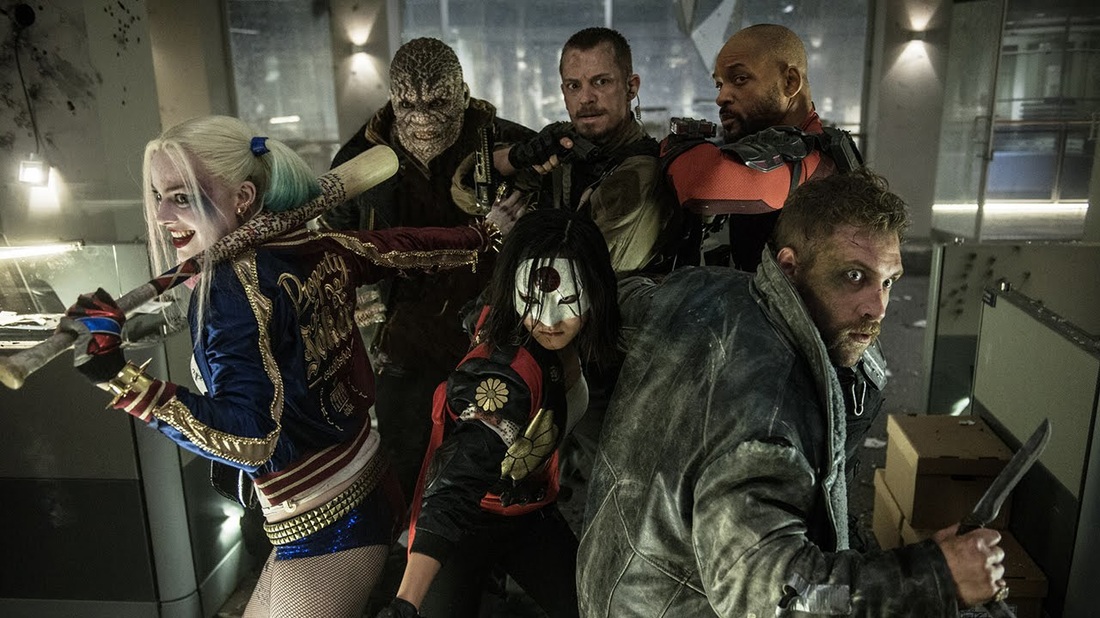
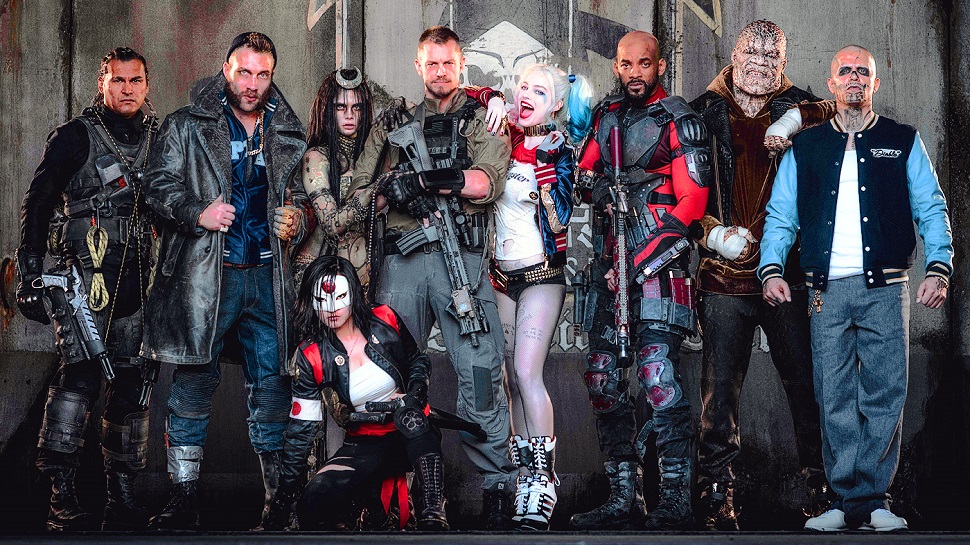
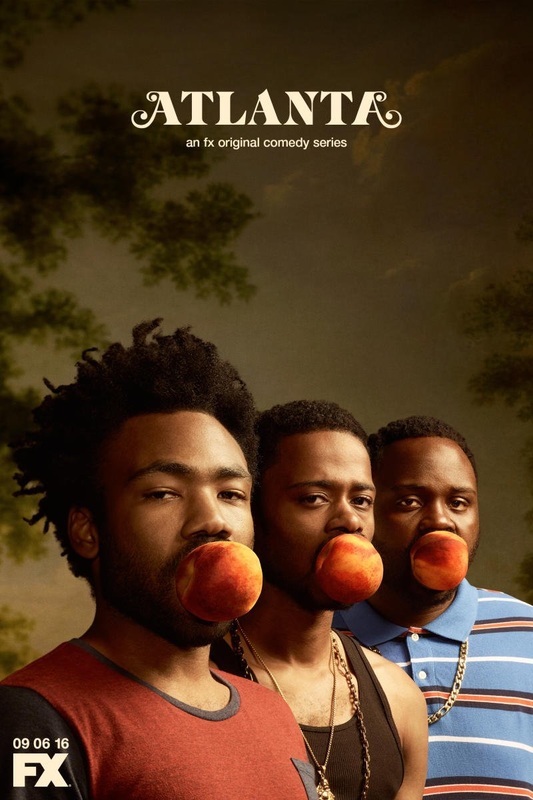
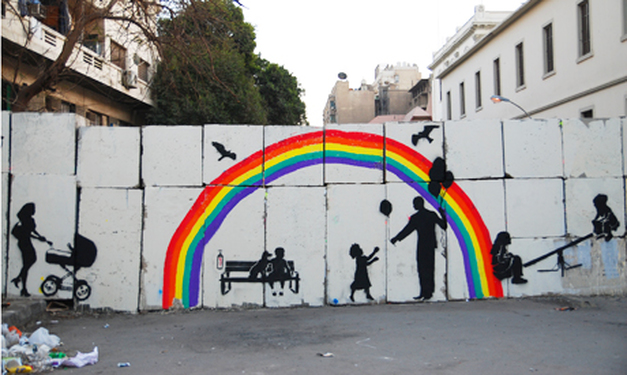
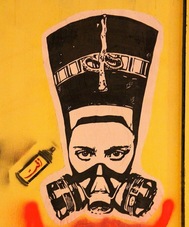

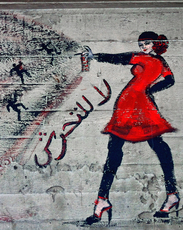
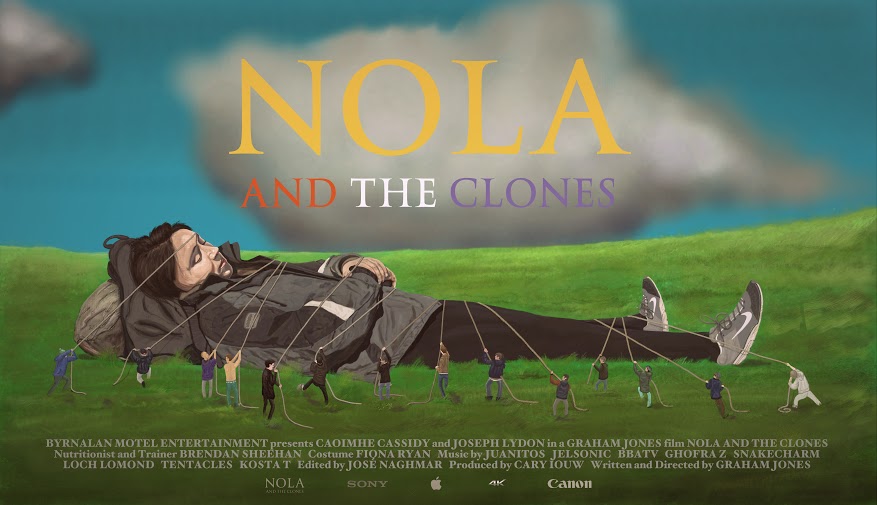
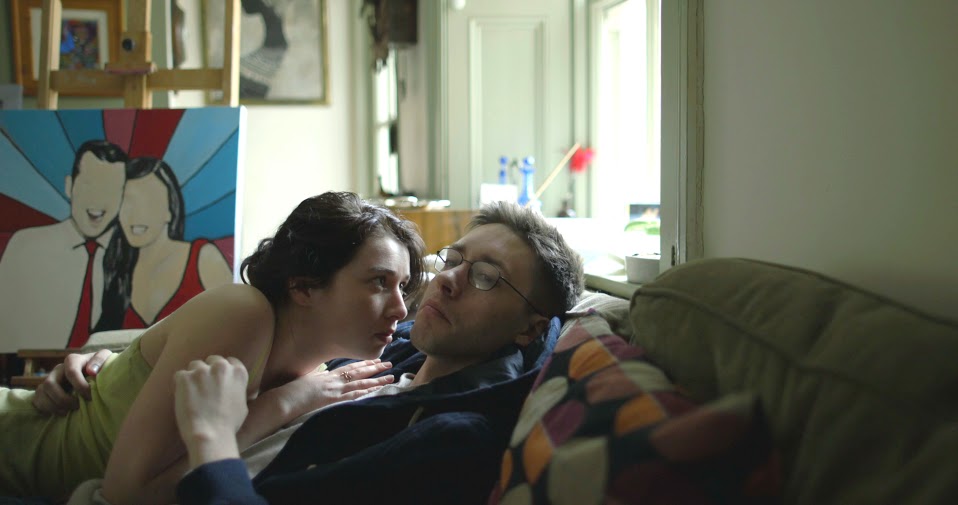
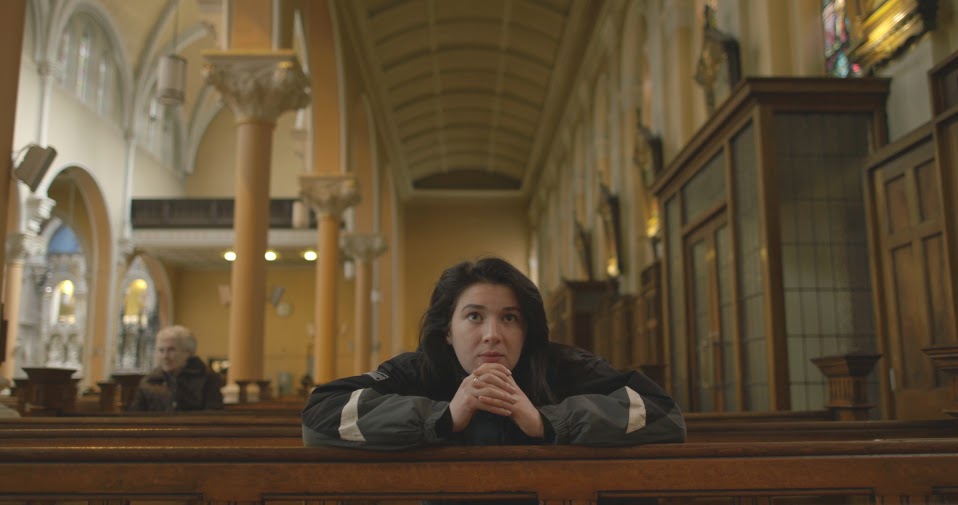
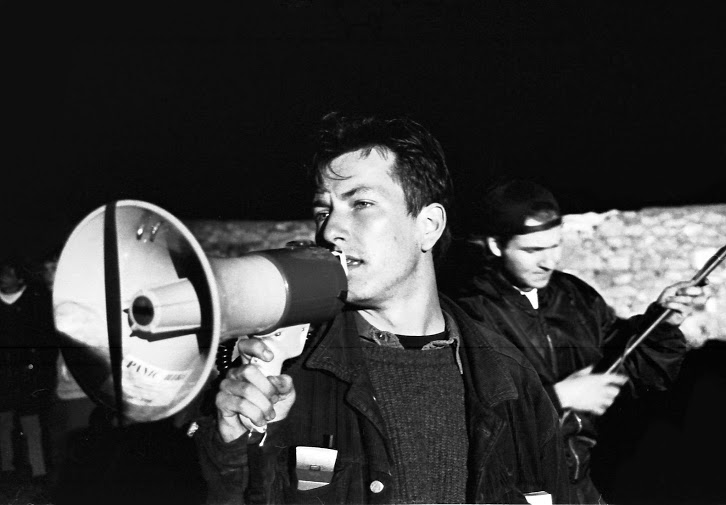
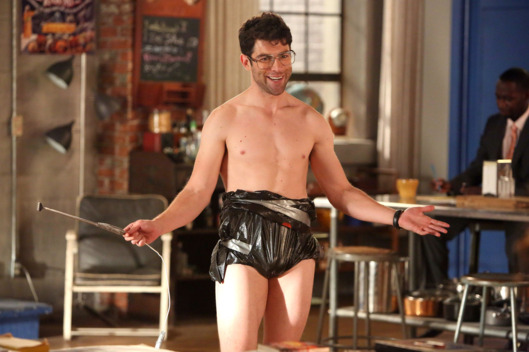
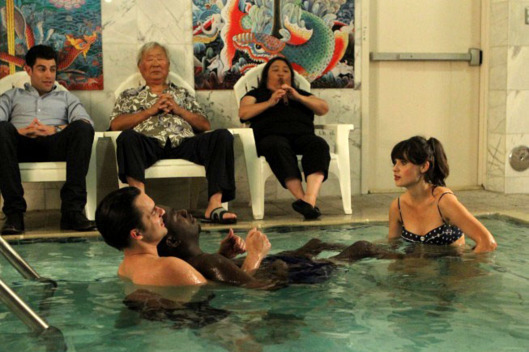
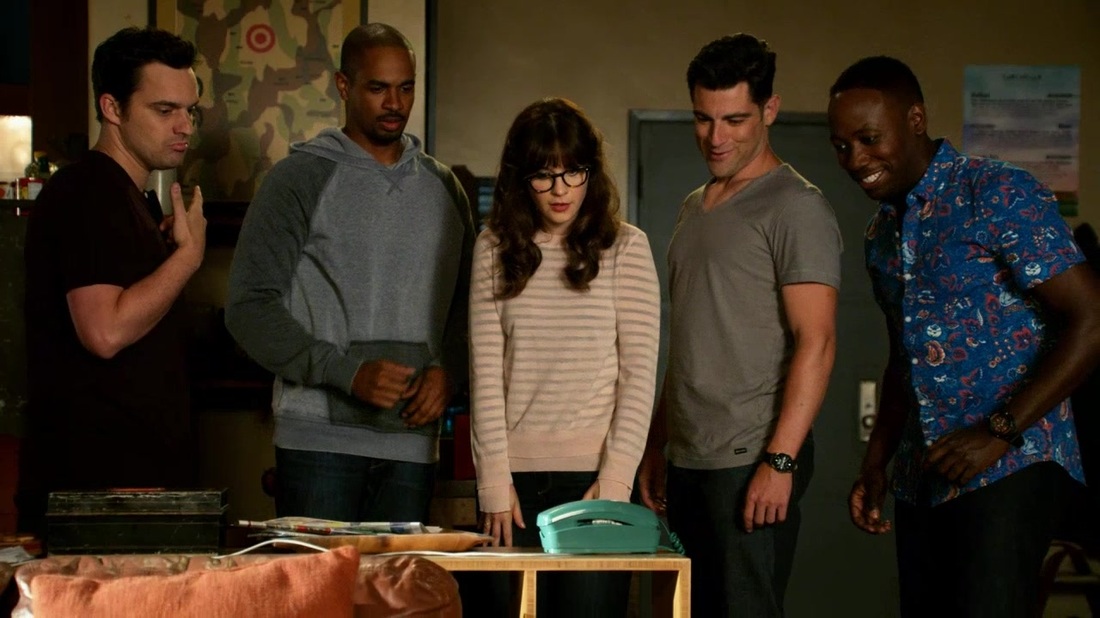
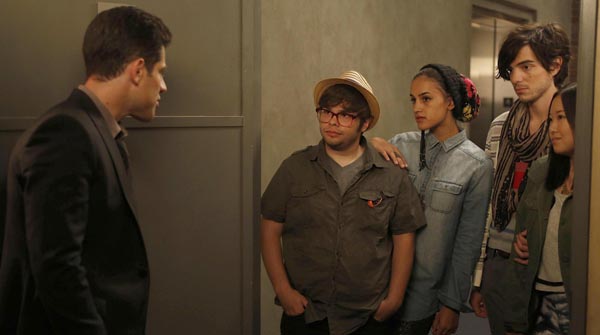
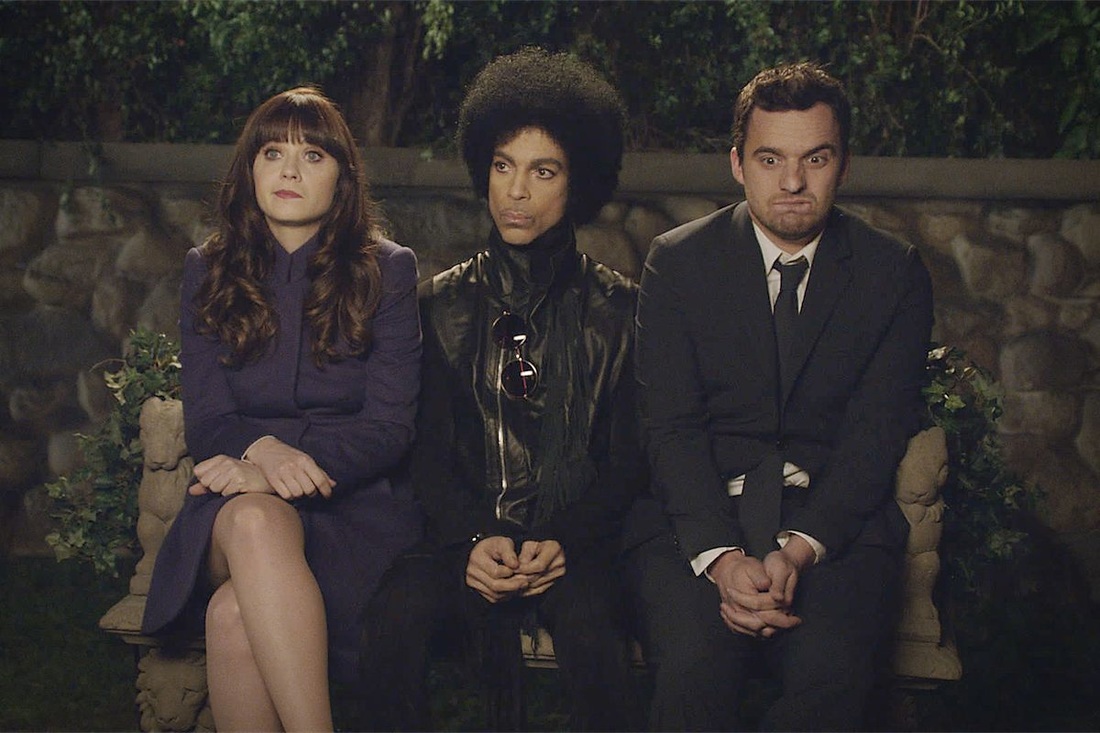
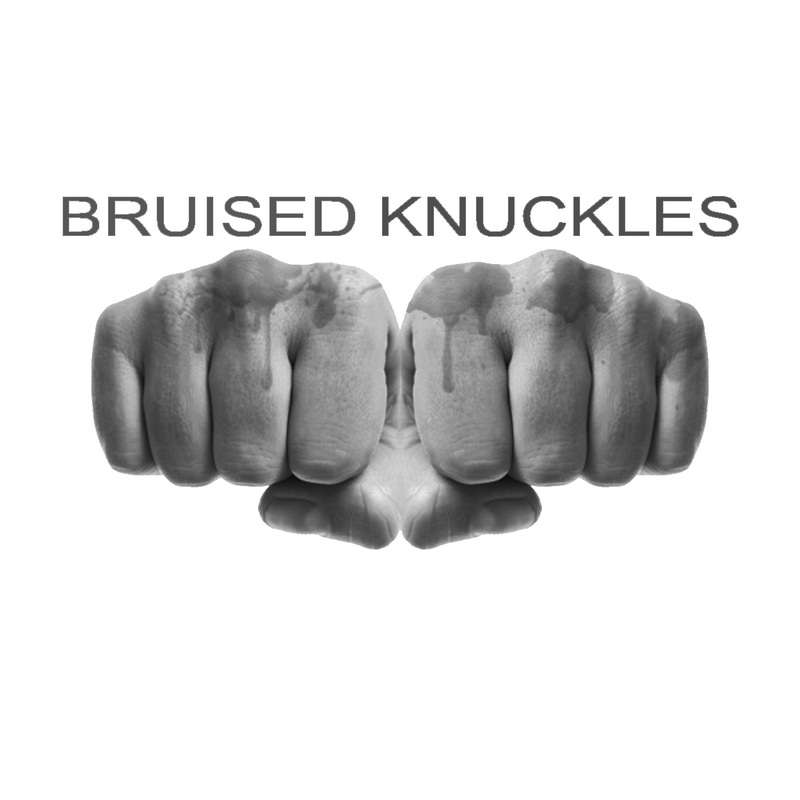
 RSS Feed
RSS Feed
